This article covers the complete car rental app development process: key features, market trends, tech stack, costs, and expert strategies for building a profitable platform.
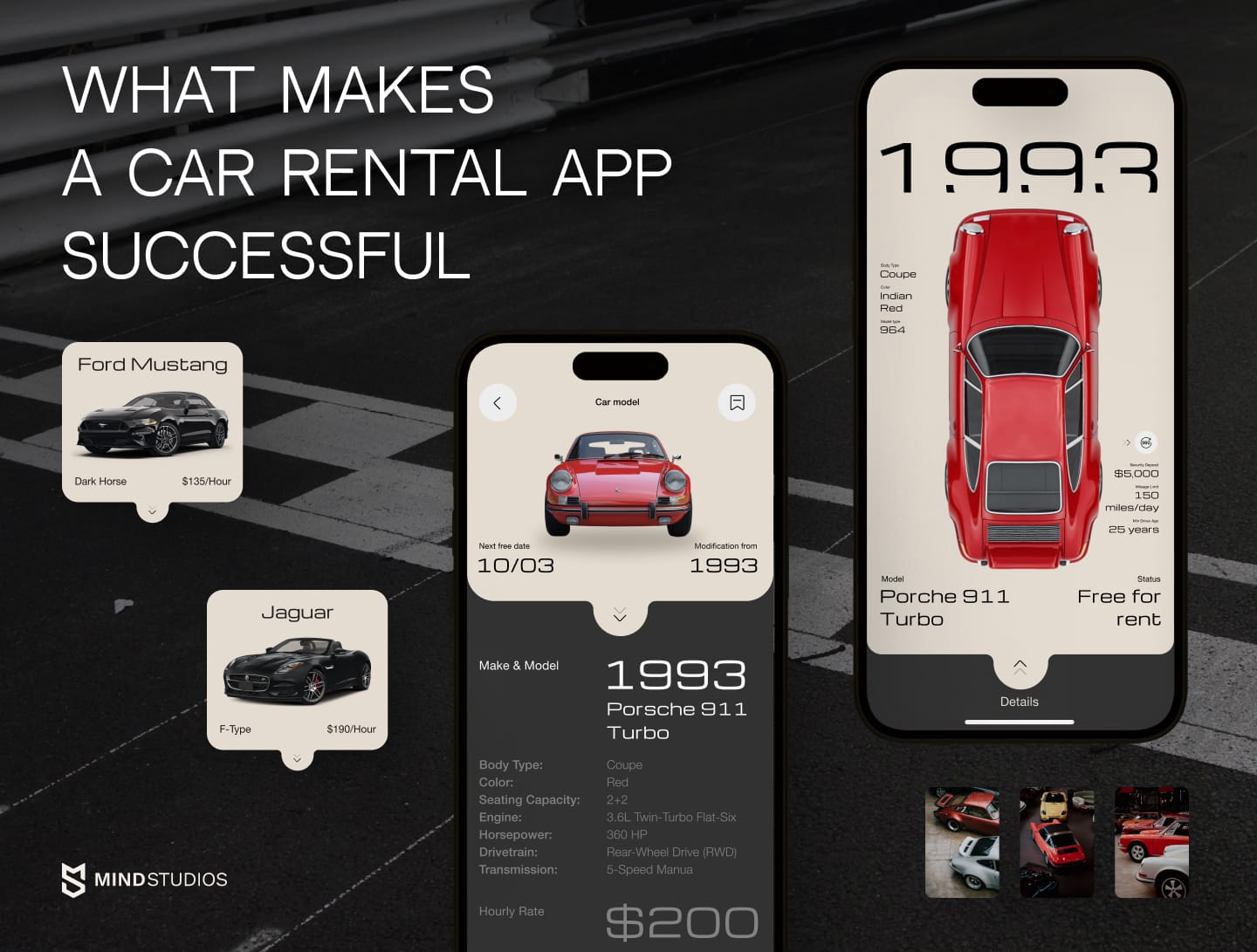
Highlights:
- Car rental app development is much more than just a booking system.
- Choosing the right app model and feature set is a key to business success.
- Development costs can vary significantly based on features and scalability.
Over 70% of car rental app users abandon bookings due to slow processing or unclear pricing. The key to standing out? Delivering a seamless, tech-driven experience that eliminates friction and builds trust.
At Mind Studios, we’ve been helping businesses navigate the mobile development landscape for over 10 years. With a portfolio of successful app launches and a track record of satisfied clients, we understand what it takes to build a high-performing, scalable car rental solution.
In this article, we’ll lay out eight key strategies we’ve applied in real-world projects to help businesses gain a competitive edge. Whether just entering the market or looking to modernize your existing service, these insights will set you up for success.
Car rental app types
Choosing the right type of car rental app is a crucial decision that depends on your business model, target audience, and operational needs. Below are the main types of car rental applications and the specific use cases they serve.
1. Traditional car rental apps
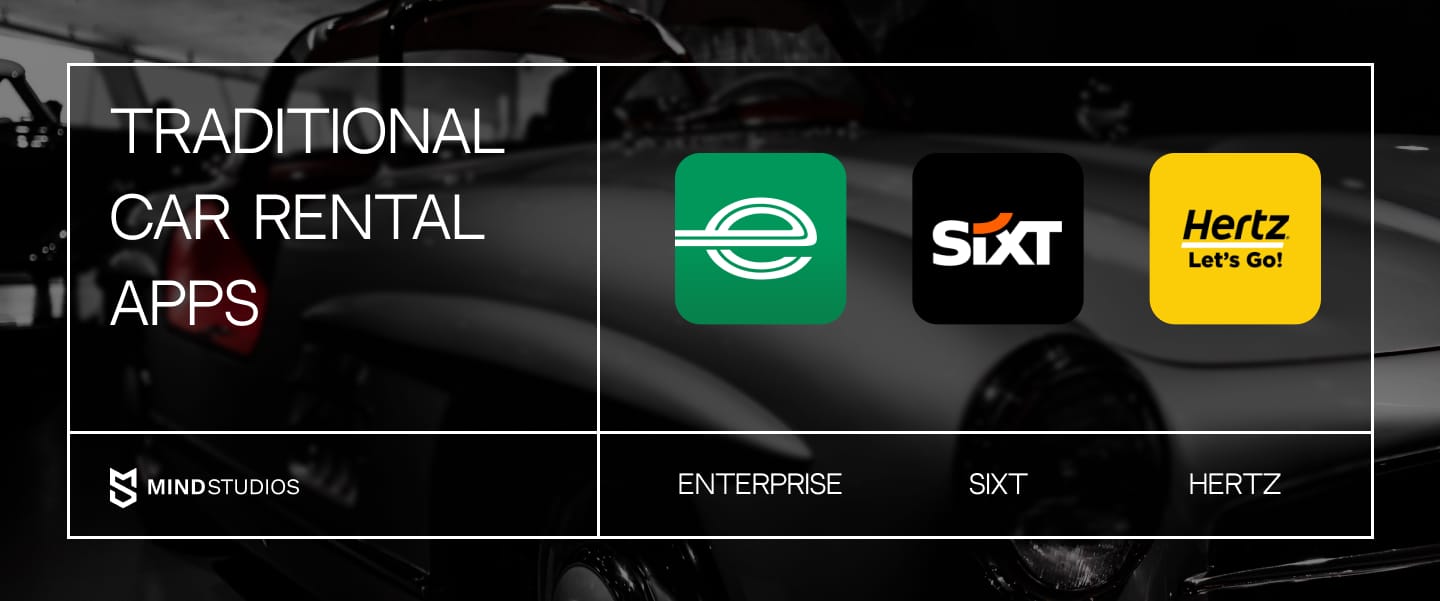
These apps digitize the services of established car rental companies, allowing users to book vehicles from a fleet managed by the company.
| Business model | Operated by car rental companies with a dedicated fleet |
|---|---|
| Target audience | Tourists, business travelers, and occasional renters |
| Revenue stream | Rental fees, insurance add-ons, membership subscriptions |
| Examples | Hertz, Enterprise, Sixt |
| Best for | Companies looking to digitize their rental operations |
2. Peer-to-peer (P2P) car rental apps

These platforms allow private car owners to rent their vehicles to others, following an Airbnb-style model.
| Business model | Users rent cars from individual owners |
|---|---|
| Target audience | Budget-conscious renters, car owners looking to monetize their vehicles |
| Revenue stream | Commission on each rental, insurance fees |
| Examples | Turo, Getaround |
| Best for | Startups looking to disrupt the car rental market with a sharing economy model |
3. Subscription-based car rental apps
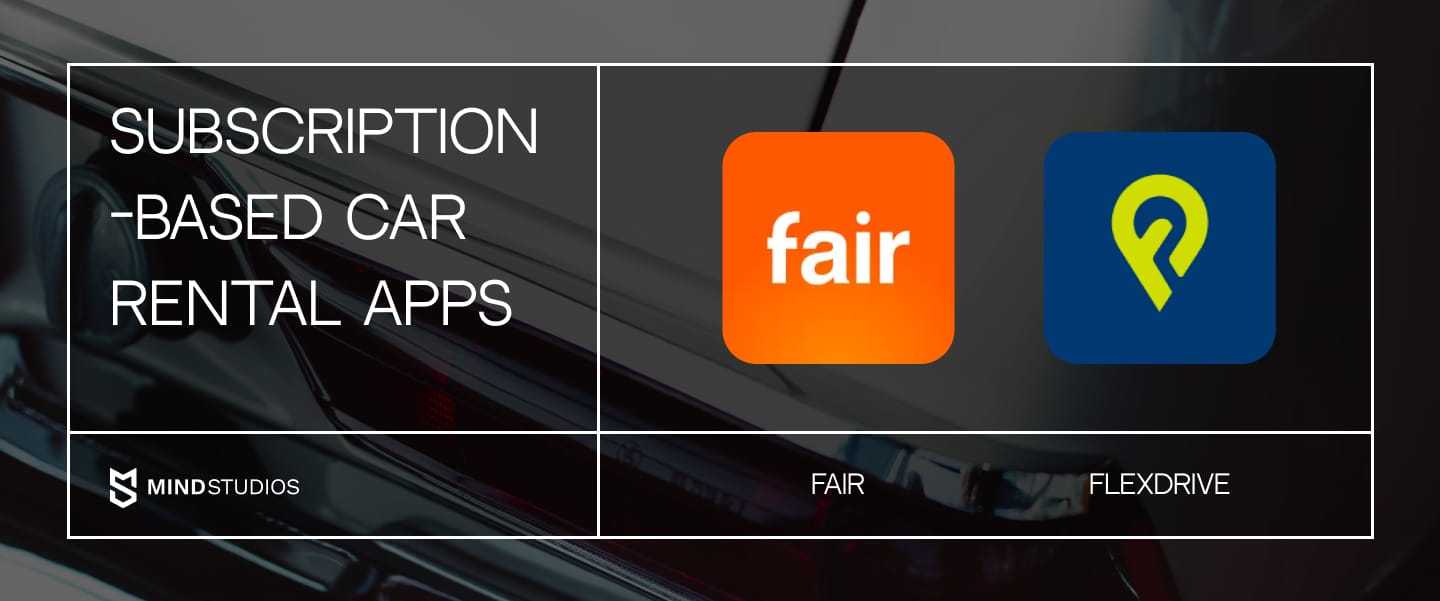
A long-term rental model where users subscribe to a service instead of purchasing a vehicle.
| Business model | Monthly or yearly car subscription service |
|---|---|
| Target audience | Urban professionals, users who need a car without ownership commitment |
| Revenue stream | Subscription fees, additional mileage charges |
| Examples | Fair, Flexdrive |
| Best for | Businesses targeting users who prefer flexibility to ownership |
4. Corporate car rental apps
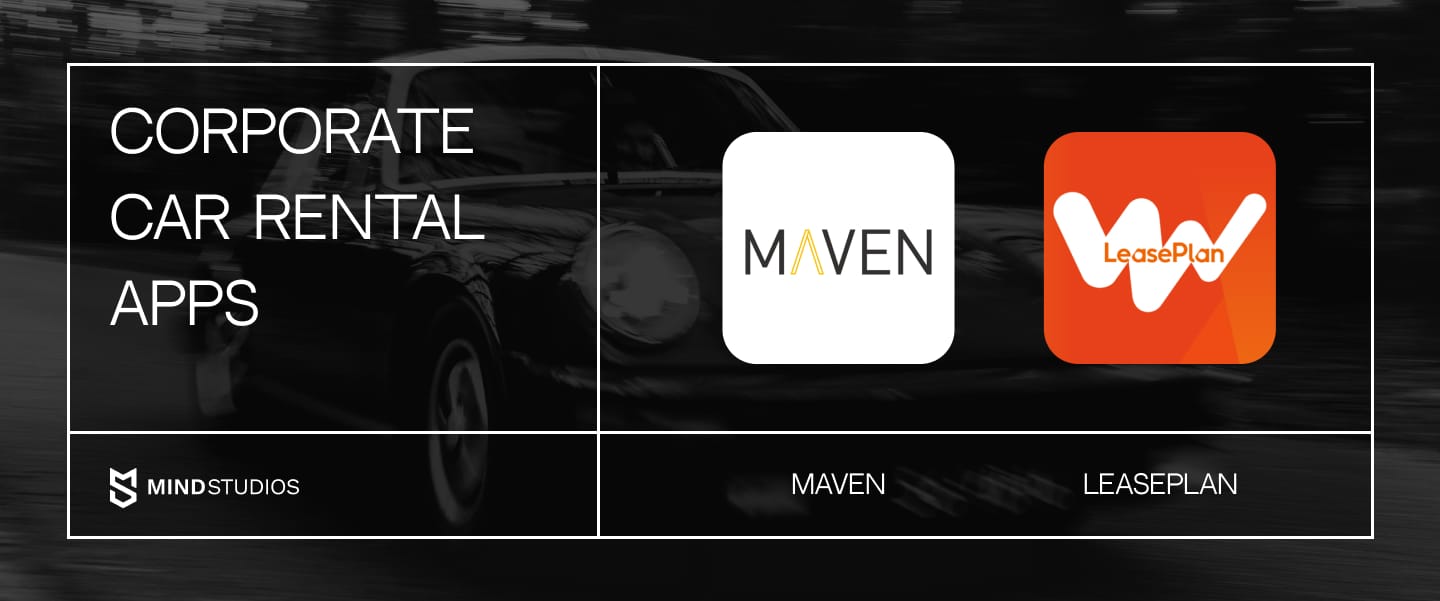
Tailored solutions for businesses that provide employees with company vehicles.
| Business model | Enterprise-level vehicle leasing for corporate clients |
|---|---|
| Target audience | Companies needing fleet management for employees |
| Revenue stream | Corporate leasing contracts, usage-based billing |
| Examples | Maven, LeasePlan |
| Best for | Businesses managing a fleet for employees or corporate travel |
5. Luxury & exotic car rental apps
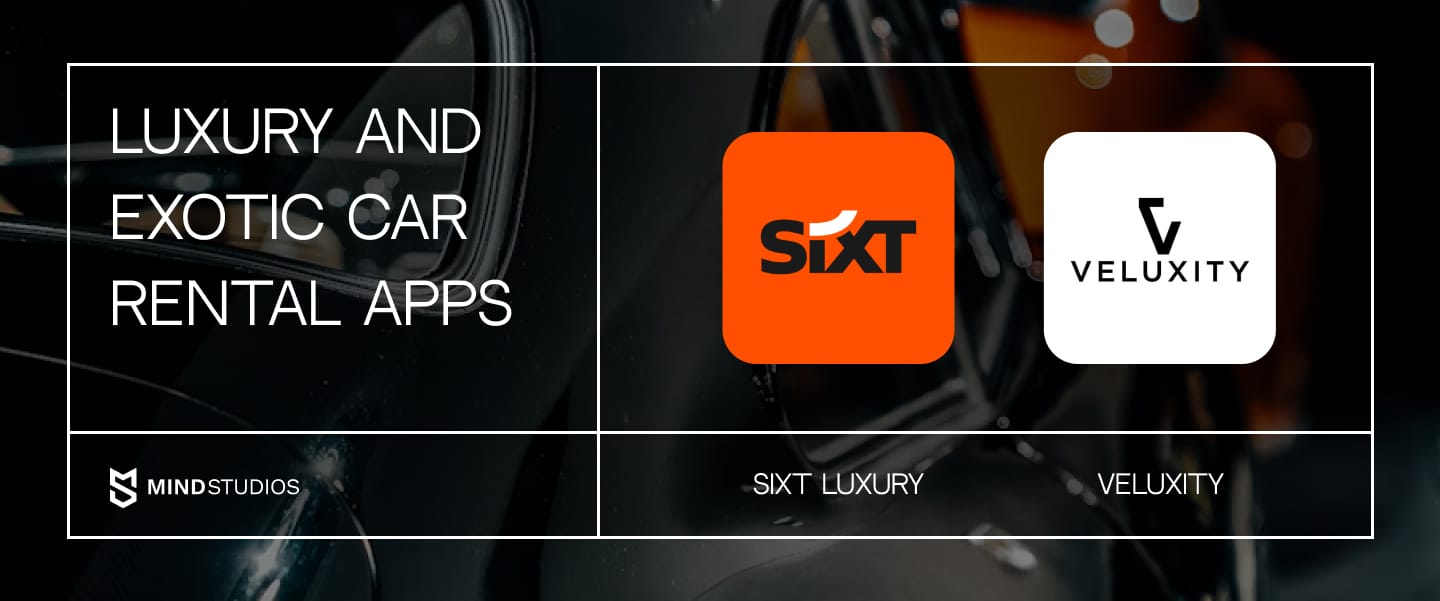
Designed for high-end users who want to rent premium or exotic cars for special occasions.
| Business model | Premium and luxury car rentals |
|---|---|
| Target audience | High-net-worth individuals, event planners, travel enthusiasts |
| Revenue stream | High-end rental fees, premium service add-ons |
| Examples | SIXT Luxury, Veluxity |
| Best for | Niche businesses offering high-end car rental services |
Choosing the right app type
Choosing the right type of car rental app requires a clear understanding of the target audience and market demands. Validating your objectives early on is essential to avoid costly missteps.
The success of your car rental app starts with defining your goals. A well-validated idea ensures you choose the right model and functionality from the start.
— Dmytro Dobrytskyi, CEO and founder of Mind Studios
Even the most innovative app ideas can fall short without a clear strategy. Validating your concept early ensures you invest in the right model from the start.
At Mind Studios, we help businesses analyze their needs, validate ideas, and develop tailored solutions. Whether you’re launching a P2P car-sharing platform or a corporate fleet management tool, our team will help you make the right choice. Schedule a free consultation today for expert advice on your car rental app strategy.
8 Mind Studios expert strategies for building a profitable car rental app
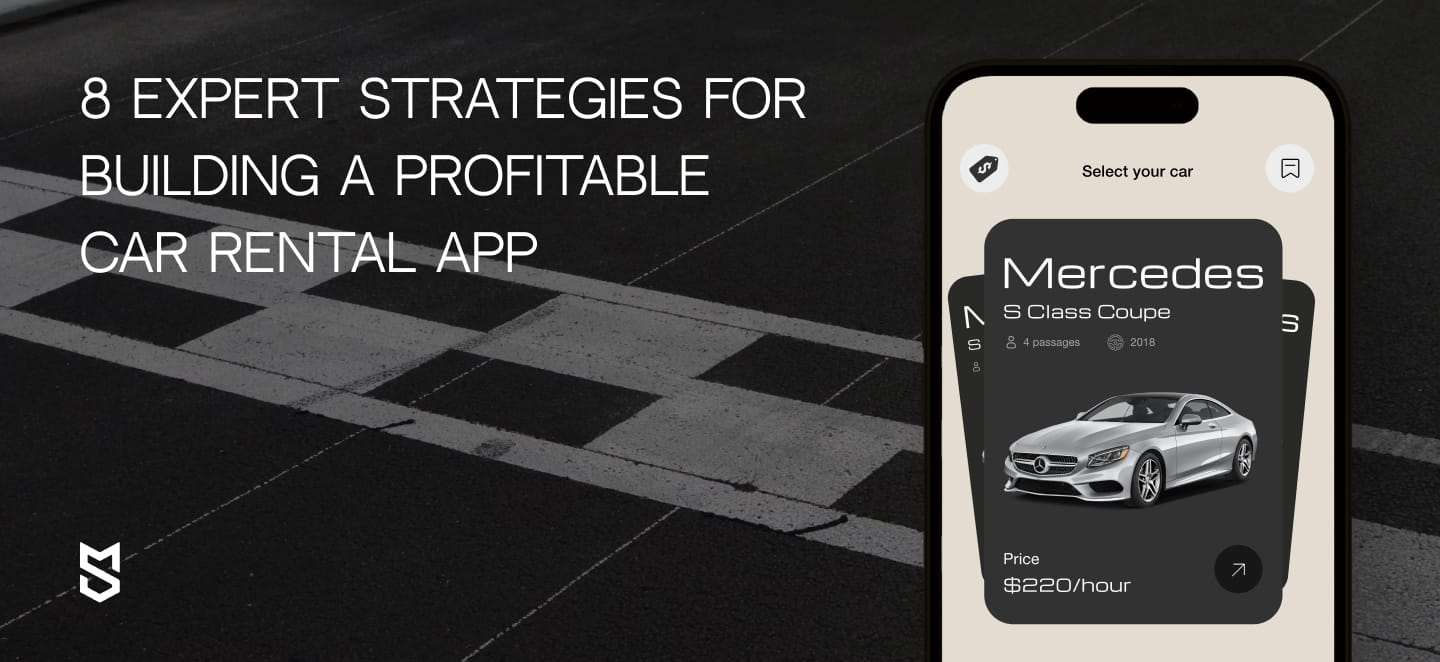
Developing a car rental app isn’t just about adding a booking feature and launching — it’s about building a scalable, user-friendly, and revenue-generating platform. While working with car rental apps, validating app ideas, and designing intuitive UX, we have noticed several important issues you might need to focus on:
1. Follow market trends that attract investments
The most successful car rental startups today attract investors by integrating AI, automation, and sustainability features. Understanding these trends ensures long-term profitability.
| What investors look for | Why it matters |
|---|---|
| AI-powered fleet management | Cuts operational costs & optimizes asset utilization |
| Seamless digital experiences | Fast, hassle-free booking drives user retention |
| EV & sustainability focus | Consumers & investors prioritize eco-friendly mobility |
| Flexible pricing & business models | Subscription-based models are outpacing traditional daily rentals |
Mind Studios tip:
Leverage AI to optimize fleet operations — investors prioritize startups that integrate AI-driven fleet management to reduce downtime and maximize vehicle utilization. Implementing predictive maintenance algorithms can reduce fleet repair costs by up to 30%. Instead of a fixed pricing model, AI-powered demand-based pricing, like Getaround and Uber, can be used to increase profitability in peak rental periods.
2. Choosing the right market for your car rental app
Not every market offers equal growth potential. North America remains the largest market in 2025, Asia-Pacific is the fastest-growing one, and emerging markets present high ROI opportunities.
| Region | Market strength | Key challenges |
|---|---|---|
| North America | High demand, mature market | Intense competition, high customer expectations |
| Europe | Strong tourism & corporate travel | Complex regulatory landscape |
| Asia-Pacific | Fastest growth (8% CAGR) | Infrastructure limitations |
| Latin America & MEA | High demand for rentals | Lower digital adoption rates |
Mind Studios tip:
Market validation is crucial before expansion. Run a pilot program in a high-demand city with limited competition before scaling nationwide. Target regions with flexible rental models — Kovi succeeded in Latin America by offering weekly car subscriptions instead of daily rentals. In emerging markets, alternative payment methods (mobile wallets, buy-now-pay-later) might attract non-credit card users. This strategy boosted the adoption rates of Grab and Gojek.
3. Learn from competitors and improve on their model
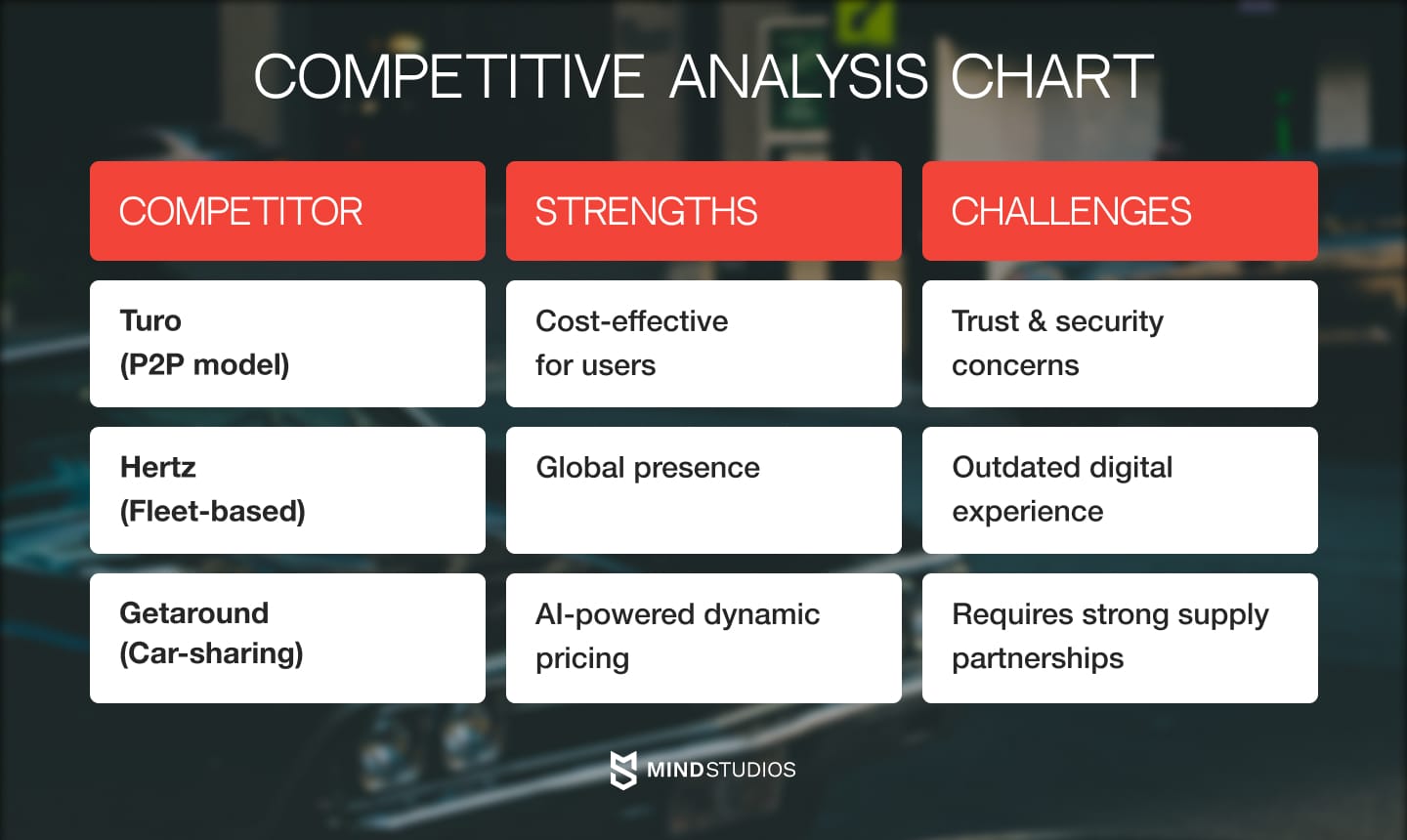
Studying top players like Turo, Getaround, and Hertz helps identify gaps in their models and outperform them. Here’s an example of how it might look:
Mind Studios insight:
Turo scaled by focusing on user trust — but its biggest challenge remains fraud prevention. A strong ID verification system using AI-driven fraud detection can reduce chargebacks and fraud risks significantly. We advise you to study competitors’ 1-star reviews. They reveal pain points that your app can fix from the start. For example, Hertz users often complain about hidden fees. Offering transparent pricing breakdowns will improve trust and conversion.
4. Build features that matter most to users
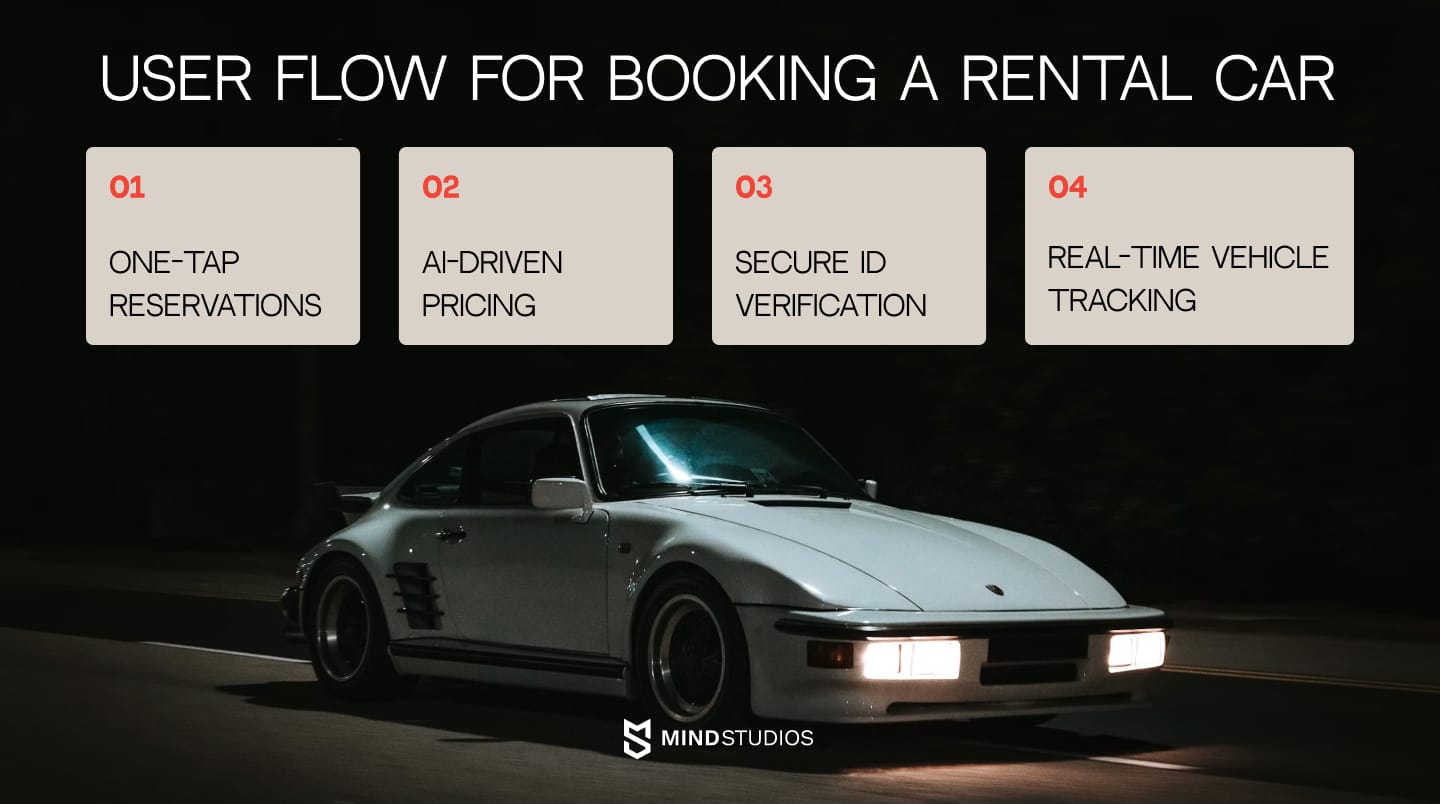
The best rental apps prioritize speed, convenience, and trust. Users expect seamless booking and transparent pricing. You can pay attention to:
- One-tap reservations: they reduce friction in the checkout process.
- AI-driven pricing: smart dynamic pricing increases profits.
- Secure ID verification: it reduces fraud and speeds up approvals.
- Real-time vehicle tracking: ensures security & user trust.
Mind Studios insight:
Apps with AI-powered fleet optimization & ID verification see higher retention and fewer abandoned bookings.
5. Selecting a revenue model that maximizes profitability
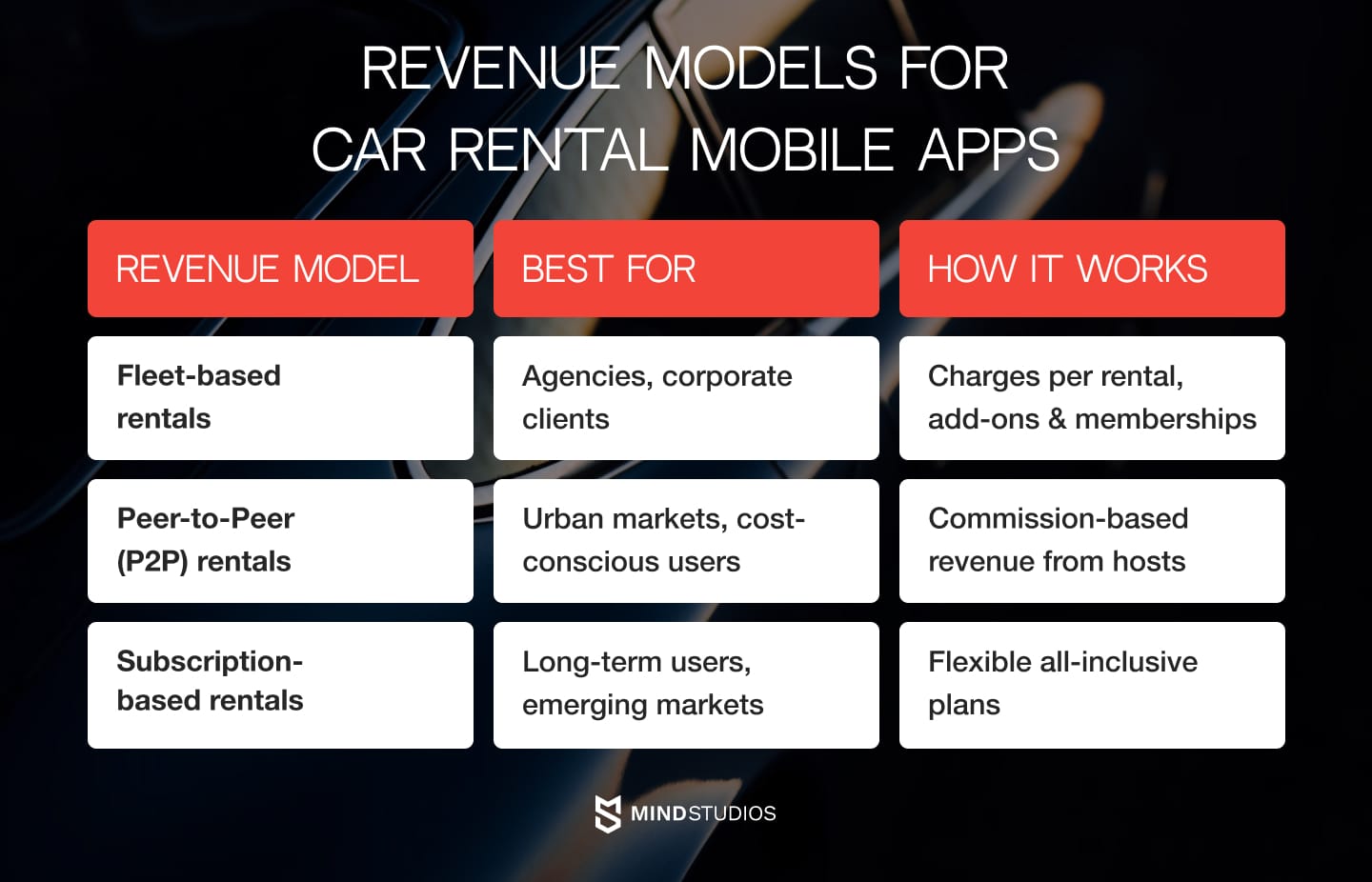
Your business model must match your target audience — fleet-based models work well for corporate clients, while P2P models thrive in urban markets.
Mind Studios insight:
Hybrid monetization models generate 30% more revenue than single-source income. Instead of relying solely on rental fees, add-ons like priority booking, premium insurance, or GPS tracking upsells can boost margins.
Our advice: Introduce loyalty tiers. Reward repeat users with discounted insurance, early access to premium cars, or free upgrades to increase lifetime customer value.
6. The right development partner is key to success
More than half of failed rental apps cite poor UX/UI and backend inefficiencies as primary reasons. Building the app correctly from the start is crucial.
Mind Studios tip:
Many startups overlook backend architecture, which leads to scalability issues. Build your system with a microservices approach, enabling faster feature rollouts and avoiding downtime during traffic spikes. Ensure compliance with regional regulations (GDPR, CCPA) from day one to avoid costly rewrites later.
Launching a car rental app means more than just going live — it means creating a platform that’s ready to grow with your business. Our development team at Mind Studios has the experience and the tech expertise to help you do just that. Discover how our custom software services can turn your app idea into a thriving business.
7. Scalability is a must — plan for growth from day one

The worst mistake is building an app that cannot scale. Rental platforms should be designed for future expansion. We advise you to pay attention to such technologies as:
- Cloud hosting: it prevents slowdowns as demand grows.
- Modular architecture: you can add features without disrupting performance.
- Multi-region support: an easy way to expand seamlessly into new markets.
Mind Studios insight:
Rental apps integrating serverless cloud infrastructure experience fewer outages during peak demand. AWS Lambda or Google Cloud Functions can scale dynamically without high server costs. Implement multi-city expansion features from day one. Before launching in new markets, enable localized pricing, currency conversion, and regional insurance partners.
8. Marketing & user acquisition strategies matter
A great app won’t succeed without a strong user acquisition strategy. Referral programs can drive new users to top rental apps. Discover referral & loyalty incentives—they encourage organic growth. SEO-driven content strategy is also a good marketing tool that captures search-driven traffic. Of course, do not forget about AI-powered user segmentation—it enables targeted marketing.
Mind Studios insight:
Referral programs drive a lot of new user acquisitions in car rental apps. Turo, Zipcar, and Getaround all grew through user incentives — offering discounted rentals or cashback for referrals increases organic signups. Run AI-powered ad targeting. Use similar audiences from existing renters to reach high-intent users, reducing customer acquisition costs.
A great idea is just the beginning — successful execution requires expertise, market fit, and smart technology. Need guidance on features & monetization or want a scalable, investment-ready solution?
Book a free consultation today — let’s turn your vision into a profitable car rental platform.
Key features of car rental apps
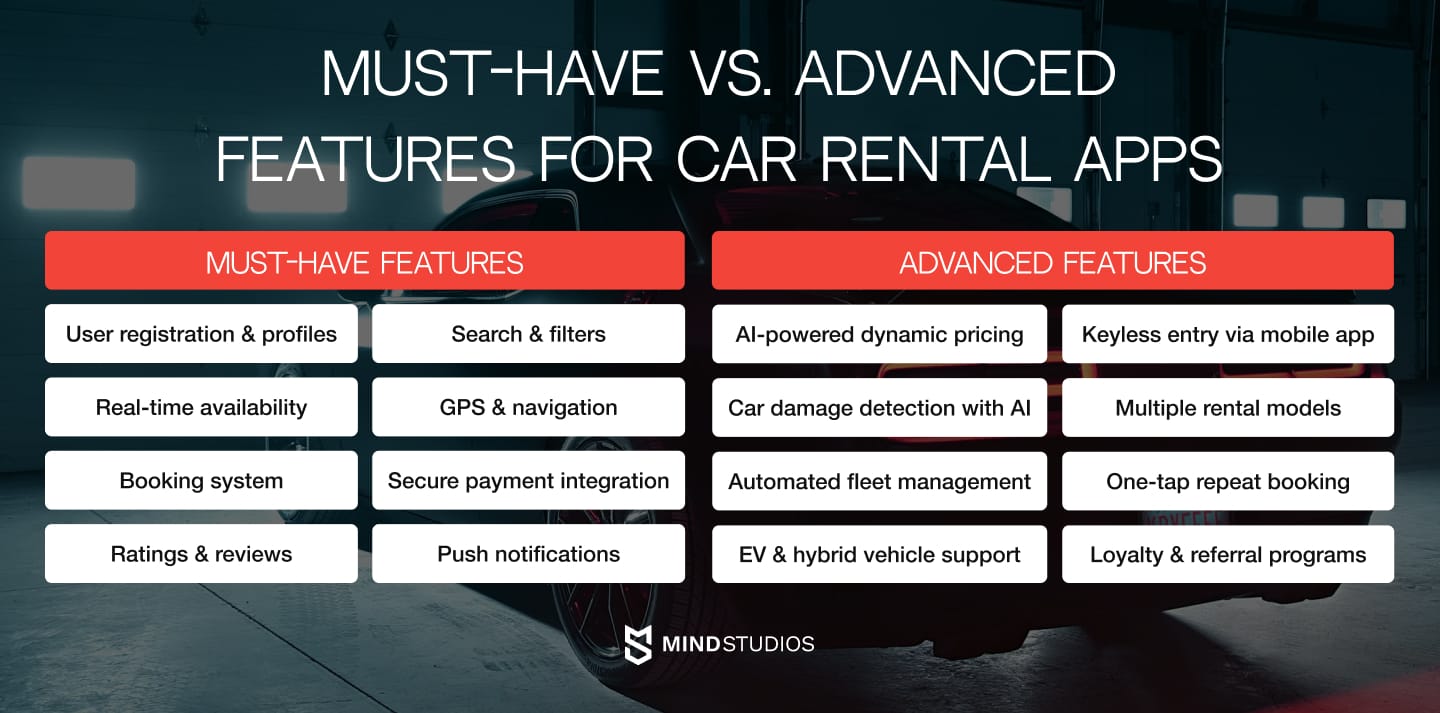
Building a successful car rental app requires more than just a booking function. To stay competitive, your app must offer seamless usability, security, and real-time vehicle management. Below are the must-have and advanced features that enhance user experience, improve functionality, and ensure smooth operations for both customers and fleet owners.
Must-have features for a car rental app
| User registration & profiles | Secure sign-up via email, phone, or social media for a personalized experience. |
|---|---|
| Search & filters | Allows users to find the right vehicle based on location, price, car type, and availability. |
| Real-time availability | Displays only available cars, preventing double bookings and enhancing user experience. |
| GPS tracking & navigation | Enables live tracking of rented cars, improving security and fleet management. |
| Booking & reservation system | Ensures seamless renting with flexible pickup/drop-off options and automated confirmation. |
| Secure payment integration | Supports multiple payment methods (credit cards, e-wallets, crypto) with fraud prevention mechanisms. |
| Ratings & reviews | Helps build trust by allowing users to rate services and share vehicle feedback. |
| Push notifications | Keeps users informed about booking confirmations, payment updates, and special offers. |
| Customer support & chat | Provides real-time assistance for rental issues and inquiries. |
A successful car rental app goes beyond basic booking, payments, and tracking. These essentials keep things running, but it’s the advanced features that separate top platforms from the rest. The following tools not only optimize operations but also drive growth and keep users engaged.
Advanced features for a competitive edge
| AI-powered dynamic pricing | Adjusts rental prices based on demand, seasonality, and market conditions. |
|---|---|
| Keyless entry via mobile app | Allows renters to unlock and start vehicles without physical keys. |
| Car damage detection with AI | Automates the inspection process, detecting damages before and after each rental. |
| Multiple rental models | Supports P2P car-sharing, corporate leasing, and traditional rental models. |
| Automated fleet management | Optimizes vehicle distribution, maintenance schedules, and fuel usage. |
| One-tap repeat booking | Simplifies re-booking for frequent users, improving retention rates. |
| Loyalty & referral programs | Increases customer retention through discounts and reward points. |
Mind Studios expert tip: Apps that integrate AI-based fleet management and dynamic pricing improve user retention and maximize revenue through real-time demand tracking.
Functionality ensures customer satisfaction, business growth, and efficient operations.
Not sure which features align with your business needs? Our team at Mind Studios has built tailored solutions for logistics and rental platforms worldwide. Let’s discuss how we can develop a feature-rich app that scales with your business.
Car rental mobile app development cost
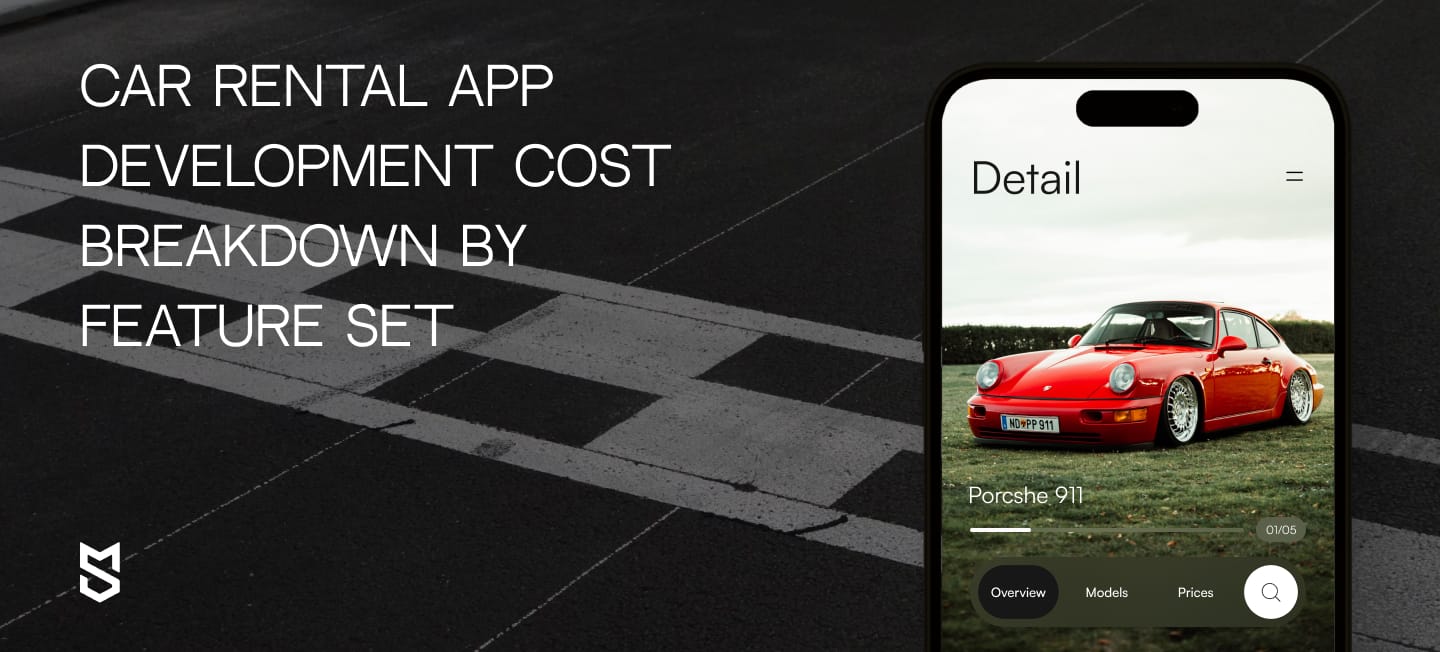
Whether you’re building a peer-to-peer rental platform like Turo or a fleet-based rental service, estimating development expenses is crucial for planning your budget effectively. And the cost to develop a car rental app will depend on its features, tech stack, development time, and third-party integrations.
What influences car rental app development costs?
As obvious as it may sound, the complexity of your car rental app — whether it’s a simple booking system or a feature-rich platform — will determine development costs. This table outlines the key areas that influence pricing, from security compliance to platform selection.
| Factor | How it affects cost |
|---|---|
| App type | Peer-to-peer (P2P) apps require advanced owner-renter interactions, increasing development costs. |
| Platform choice | Native apps (iOS & Android) cost more than cross-platform development, but operate better. |
| Features & integrations | Advanced features like AI-based pricing and car tracking increase app complexity. |
| Backend development | Cloud-based infrastructure and real-time processing require more investment. |
| Third-party APIs | Payment gateways, GPS tracking, and AI-based analytics add licensing fees. |
| UI/UX design complexity | Custom, user-friendly designs increase cost but improve retention. |
| Security & compliance | Adhering to GDPR, PCI DSS, and data encryption increases development scope. |
Mind Studios expert tip: Starting with an MVP (Minimum Viable Product) can reduce initial costs while ensuring the app meets essential business needs.
Estimated cost breakdown for car rental app development
So, what does it take to develop a car rental app? The answer depends on your goals. A simple reservation system won’t require the same investment as a full-scale platform with AI-driven pricing and automated fleet tracking. Here’s a look at estimated costs across different app types.
| Feature set | Estimated cost (USD) | Development time (weeks) |
|---|---|---|
| Basic features (MVP) | 40,000–70,000 | 12–16 weeks |
| Advanced features (AI-based pricing, fleet management, real-time tracking) | 80,000–150,000 | 20–30 weeks |
| Enterprise-level app with AI, IoT & blockchain | 200,000+ | 30+ weeks |
Cost comparison: In-house vs. outsourced development
Beyond the features, another big decision is whether to build your own team or work with an external development partner. Both options have advantages, but understanding the trade-offs is key — see the side-by-side comparison below.
| Development approach | Pros | Cons |
|---|---|---|
| In-house team | Full control over development, dedicated team | High salaries, long hiring process |
| Outsourcing to a development partner | Cost-effective, access to expert developers, faster time-to-market | Requires finding a reliable partner |
| Freelancers | Lower upfront costs, flexible | Precarious reliability, quality concerns |
How to optimize your development budget?
- Start with an MVP: focus on essential features before expanding.
- Use cross-platform development: React Native can potentially reduce costs by 30-40%.
- Leverage third-party APIs instead of building custom payment solutions, navigation, or authentication solutions from scratch.
- Choose scalable cloud solutions: AWS and Google Cloud help reduce long-term hosting expenses.
Wondering how much it will cost to develop your car rental app? At Mind Studios, we provide a detailed cost breakdown and development strategy based on your specific business needs. Get in touch with our experts today!
Conclusion
In an industry where user expectations constantly evolve, a car rental app can either be your biggest competitive advantage, or a bottleneck that slows you down. The difference? Smart technology, seamless UX, and the right development approach.
Bringing a car rental app to life isn’t just about having a great idea — it’s about executing it the right way. The industry is competitive, and success depends on offering a seamless experience, the right business model, and technology that scales.
During the years of working with app development for many industries, we’ve helped businesses turn ideas into fully operational, high-performing apps. If you’re also exploring digital products beyond mobility — for example, property and rental platforms — make sure to visit our real estate page to see how we approach solutions for that domain. Developing a successful business from your car rental application concept requires more than exceptional technological capabilities. Let’s talk about how we can turn your vision into a reality — schedule a free consultation today.



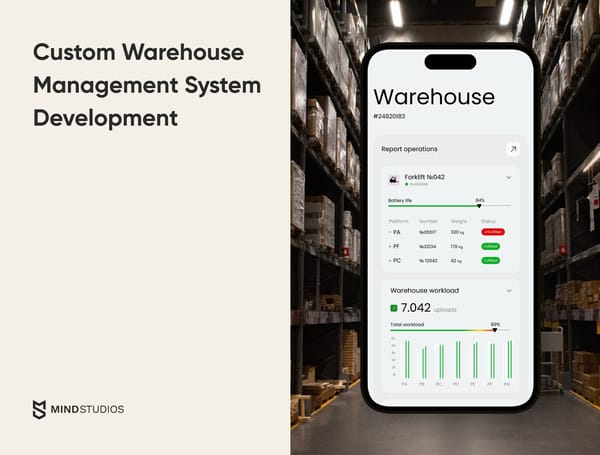
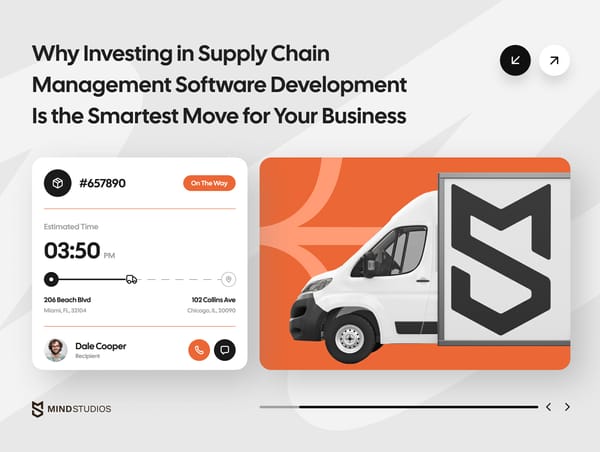
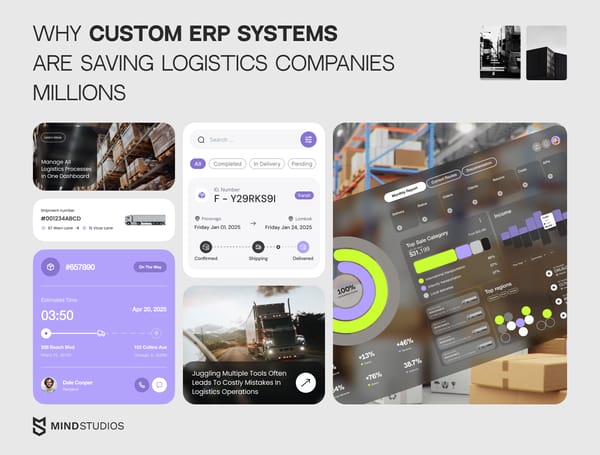
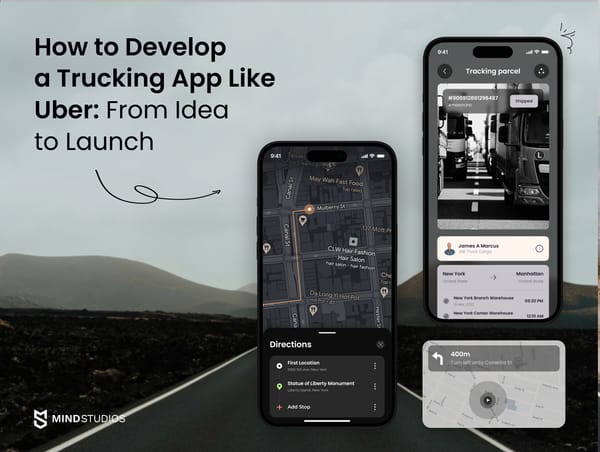
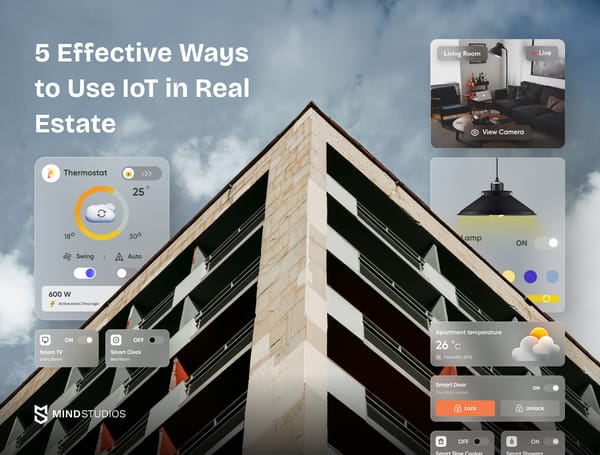
![How to Create an On-Demand Medicine Delivery App [Expert Guide]](https://themindstudios.com/blog/content/images/size/w600/2025/03/IMG-1-Cover-6.jpg)

